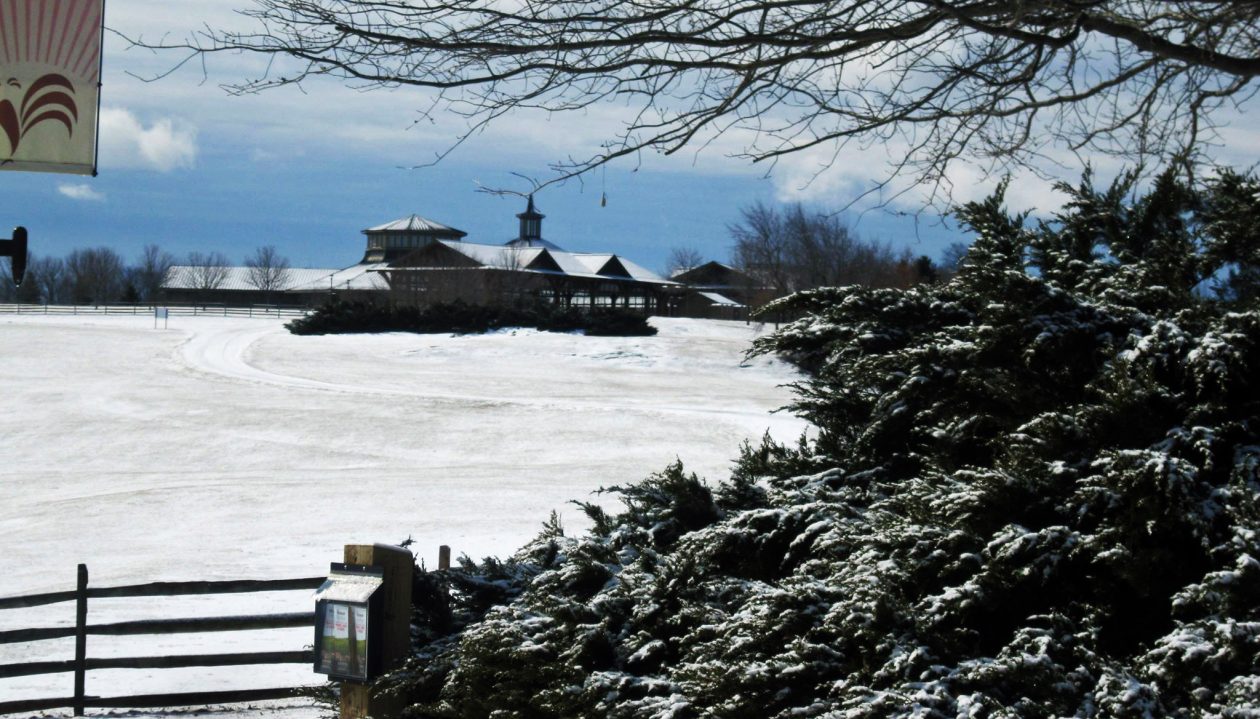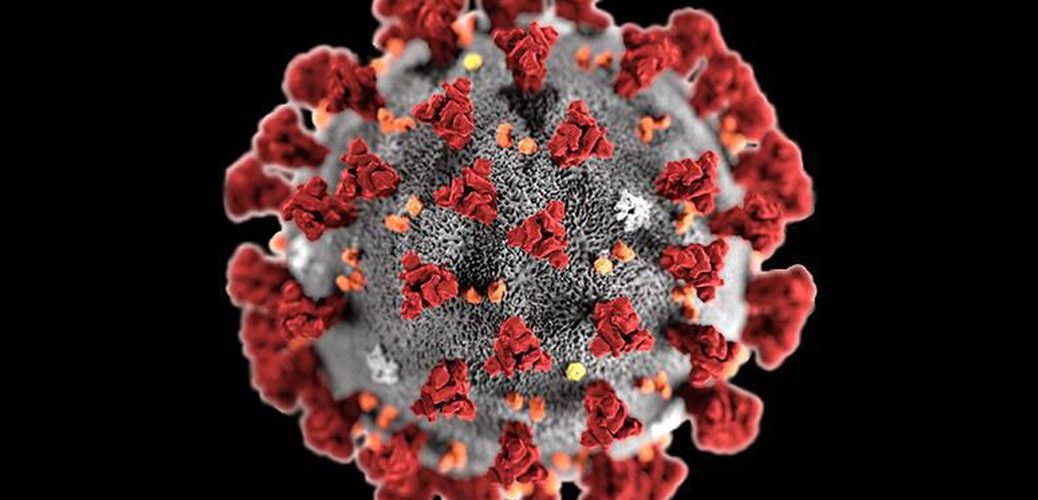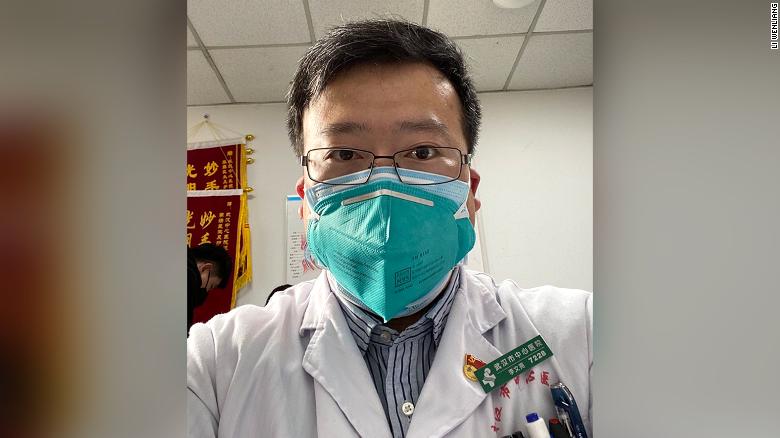COVID 19 Pandemic Begins
Someone once described the start of the COVID-19 pandemic as happening in slow motion. It certainly seemed so at first. Here in the United States the initial report of a deadly virus in distant China was just that: distant news. Of passing interest, perhaps, but too far from home to be meaningful.
Even China’s initial reports minimized the disease’s danger and criticized those who, like Dr Li Wenliang. raised dire warnings.
This is a long chronology of a hideous sickness that most thought would be brief and harmless to most. I am dividing these posts into months and even with that each post is lengthy.
December 2019
In March 2020, the South Morning China Post reported that a 55-year-old individual from Hubei province in China may have been the first person to have contracted COVID-19 and that that case dates back to Nov. 17, 2019, but that was in March after thousands had already died.
December 6: according to a study in The Lancet, the symptom onset date of the first patient identified was “Dec 1, 2019 . . . 5 days after illness onset, his wife, a 53-year-old woman who had no known history of exposure to the market, also presented with pneumonia and was hospitalizein the isolation ward.” In other words, as early as the second week of December, Wuhan doctors were finding cases that indicated the virus was spreading from one human to another.
December 21: Wuhan doctors begin to notice a “cluster of pneumonia cases with an unknown cause.”
December 25: Chinese medical staff in two hospitals in Wuhan are suspected of contracting viral pneumonia and are quarantined. This is additional strong evidence of human-to-human transmission. Sometime in “Late December”: Wuhan hospitals notice “an exponential increase” in the number of cases that cannot be linked back to the Huanan Seafood Wholesale Market, according to the New England Journal of Medicine.
COVID 19 Pandemic Begins
Dr. Li Wenliang
December 30: Dr. Li Wenliang sent a message to a group of other doctors warning them about a possible outbreak of an illness that resembled severe acute respiratory syndrome (SARS), urging them to take protective measures against infection.
December 31: The Wuhan Municipal Health Commission declared, “The investigation so far has not found any obvious human-to-human transmission and no medical staff infection.” This is the opposite of the belief of the doctors working on patients in Wuhan, and two doctors were already suspected of contracting the virus.
Three weeks after doctors first started noticing the cases, China contacted the World Health Organization.
COVID 19 Pandemic Begins
January 2020
January 1, 2020: Huanan Seafood Wholesale Market closes.
Dr Wenliang apologizes
The Wuhan Public Security Bureau issued summons to Dr. Li Wenliang, accusing him of “spreading rumors.” Two days later, at a police station, Dr. Li signed a statement acknowledging his “misdemeanor” and promising not to commit further “unlawful acts.”
Seven other people are arrested on similar charges and their fate was unknown.
January 1: the World Health Organization set up the IMST (Incident Management Support Team) across the three levels of the organization: headquarters, regional headquarters and country level, putting the organization on an emergency footing for dealing with the outbreak.
Human to human transmission
January 2: One study of patients in Wuhan can only connect 27 of 41 infe cted patients to exposure to the Huanan seafood market — indicating human-to-human transmission away from the market. A report written later that month concludes, “evidence so far indicates human transmission for 2019-nCoV. We are concerned that 2019-nCoV could have acquired the ability for efficient human transmission.”
January 3: The Chinese government continued efforts to suppress all information about the virus: “China’s National Health Commission, the nation’s top health authority, ordered institutions not to publish any information related to the unknown disease, and ordered labs to transfer any samples they had to designated testing institutions, or to destroy them.”
January 4: While Chinese authorities continued to insist that the virus could not spread from one person to another, doctors outside that country weren’t so convinced. The head of the University of Hong Kong’s Centre for Infection, Ho Pak-leung, warned that “the city should implement the strictest possible monitoring system for a mystery new viral pneumonia that has infected dozens of people on the mainland, as it is highly possible that the illness is spreading from human to human.”
January 4: the World Health organization reported on social media that there was a cluster of pneumonia cases – with no deaths – in Wuhan, Hubei province.
January 5: The Wuhan Municipal Health Commission put out a statement with updated numbers of cases but repeated, “preliminary investigations have shown no clear evidence of human-to-human transmission and no medical staff infections.”
The WHO reported a “pneumonia of unknown cause” in Wuhan, China.
The health organization advised against restrictions to China: “WHO advises against the application of any travel or trade restrictions on China based on the current information available on this event.”
COVID 19 Pandemic Begins
January 6: The New York Times published its first report about the virus, declaring that “59 people in the central city of Wuhan have been sickened by a pneumonia-like illness.” That first report included these comments:
Wang Linfa, an expert on emerging infectious diseases at the Duke-NUS Medical School in Singapore, said he was frustrated that scientists in China were not allowed to speak to him about the outbreak. Dr. Wang said, however, that he thought the virus was likely not spreading from humans to humans because health workers had not contracted the disease. “We should not go into panic mode,” he said.
January 8: Chinese medical authorities claimed to have identified the virus. Those authorities claimed and Western media continue to repeat, “there is no evidence that the new virus is readily spread by humans, which would make it particularly dangerous, and it has not been tied to any deaths.”
January 9: The WHO released a statement announcing the source of the disease: “Chinese authorities have made a preliminary determination of a novel (or new) coronavirus, identified in a hospitalized person with pneumonia in Wuhan.”
It added: “In the coming weeks, more comprehensive information is required to understand the current status and epidemiology of the outbreak, and the clinical picture.” [NPR timeline}
Dr. Li Wenliang
January 10: After unknowingly treating a patient with the coronavirus, Dr. Li Wenliang started coughing and developed a fever.
WHO
January 10: the World Health Organization issued a comprehensive package of technical guidance online with advice to all countries on how to detect, test and manage potential cases, based on what was known about the virus at the time. This guidance was shared with WHO’s regional emergency directors to share with WHO representatives in countries.
Based on experience with SARS and MERS and known modes of transmission of respiratory viruses, infection and prevention control guidance were published to protect health workers recommending droplet and contact precautions when caring for patients, and airborne precautions for aerosol generating procedures conducted by health workers
Wuhan City Health Commission
January 11: The Wuhan City Health Commission issued an update declaring, “All 739 close contacts, including 419 medical staff, have undergone medical observation and no related cases have been found . . . No new cases have been detected since January 3, 2020. At present, no medical staff infections have been found, and no clear evidence of human-to-human transmission has been found.” They issue a Q&A sheet later that day reemphasizing that “most of the unexplained viral pneumonia cases in Wuhan this time have a history of exposure to the South China seafood market. No clear evidence of human-to-human transmission has been found.”
January 12, 2020: Dr. Li Wenliang hospitalized. China publicly shared the genetic sequence of COVID-19.
COVID 19 Pandemic Begins
First case outside China
January 13: The first coronavirus case outside China reported in Thailand. Authorities there detected the virus in a 61-year-old Chinese woman who was visiting from Wuhan, the first case outside of China.
Thailand’s Ministry of Public Health, said the woman had not visited the Wuhan seafood market, and had come down with a fever on Jan. 5. However, the doctor said, the woman had visited a different, smaller market in Wuhan, in which live and freshly slaughtered animals were also sold.
January 14: Wuhan city health authorities release another statement declaring, “Among the close contacts, no related cases were found.” Wuhan doctors had known this was false since early December, from the first victim and his wife, who did not visit the market.
Based on the official announcement, The World Health Organization tweeted: “Preliminary investigations conducted by the Chinese authorities have found no clear evidence of human-to-human transmission of the novel #coronavirus (2019-nCoV) identified in #Wuhan, #China.” [NPR timeline]
January 15: Japan reported its first case of coronavirus. Japan’s Health Ministry said the patient had not visited any seafood markets in China, adding that “it is possible that the patient had close contact with an unknown patient with lung inflammation while in China.”
January 17: The CDC and the Department of Homeland Security’s Customs and Border Protection announced that travelers from Wuhan to the United States would undergo entry screening for symptoms associated with 2019-nCoV at three U.S. airports that received most of the travelers from Wuhan, China: San Francisco, New York (JFK), and Los Angeles.
Trump more interested in vaping
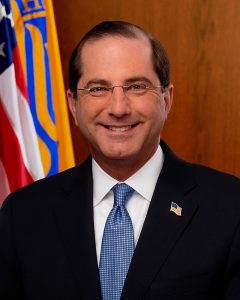
January 18: Health and Human Services Secretary Alex M Azar had his first discussion about the virus with President Trump. Unnamed “senior administration officials” told the Washington Post that “the president interjected to ask about vaping and when flavored vaping products would be back on the market.”
Despite the fact that Wuhan doctors knew the virus was contagious, city authorities allowed 40,000 families to gather and share home-cooked food in a Lunar New Year banquet.
January 19: The Chinese National Health Commission declared the virus “still preventable and controllable.” The World Health Organization updated its statement, declaring, “Not enough is known to draw definitive conclusions about how it is transmitted, the clinical features of the disease, the extent to which it has spread, or its source, which remains unknown.”
January 20: The Wuhan Municipal Health Commission declared for the last time in its daily bulletin, “no related cases were found among the close contacts.”
January 20 – 21: WHO experts from its China and Western Pacific regional offices conducted a brief field visit to Wuhan. [mission summary]
COVID 19 Pandemic Begins
First US case
January 21: The CDC announced the first U.S. case of a the coronavirus in a Snohomish County, Washington resident who returned from China six days earlier.
By this point, millions of people had left Wuhan, carrying the virus all around China and into other countries.
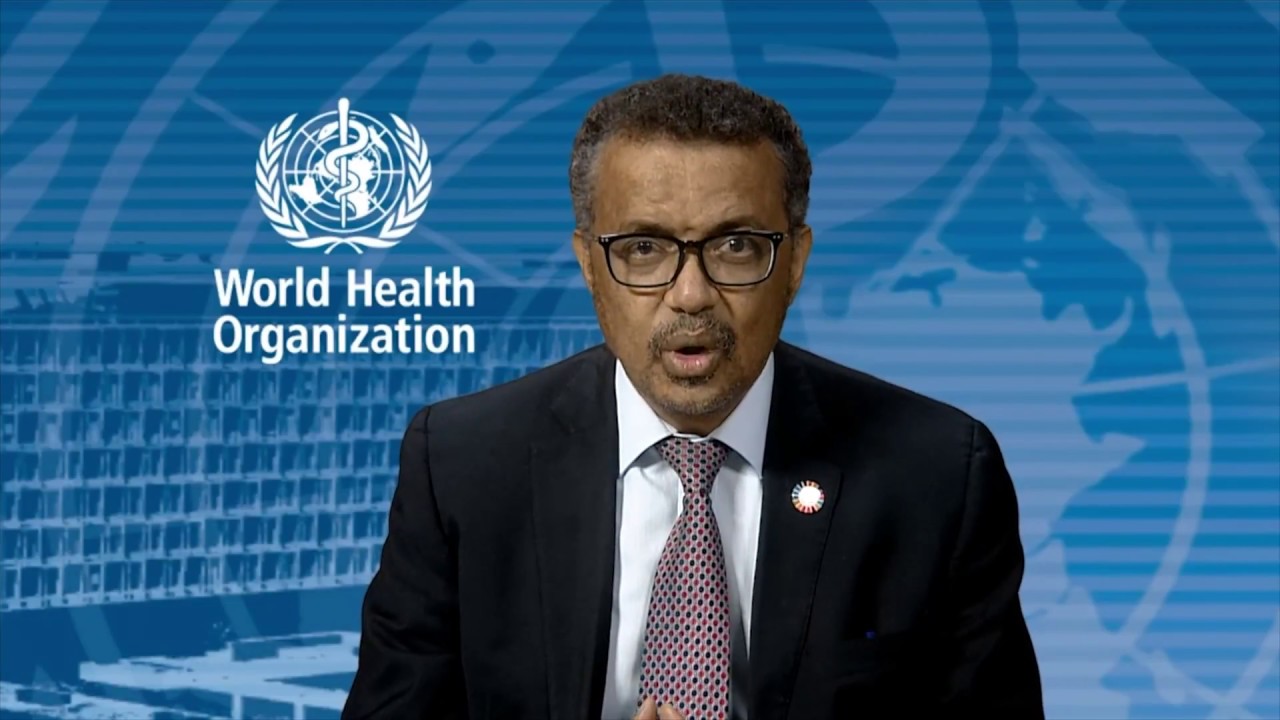
January 22: WHO director-general Tedros Adhanom Ghebreyesus continued to praise China’s handling of the outbreak. “I was very impressed by the detail and depth of China’s presentation. I also appreciate the cooperation of China’s Minister of Health, who I have spoken with directly during the last few days and weeks. His leadership and the intervention of President Xi and Premier Li have been invaluable, and all the measures they have taken to respond to the outbreak.”
COVID 19 Pandemic
Trump
January 22: President Trump, in an interview with CNBC at the World Economic Forum in Davos, Switzerland, declared, “We have it totally under control. It’s one person coming in from China. We have it under control. It’s going to be just fine.”
January 23: Chinese authorities announced their first steps for a quarantine of Wuhan. By this point, millions had already visited the city and left it during the Lunar New Year celebrations. Singapore and Vietnam reported their first cases, and an unknown but significant number of Chinese citizens had traveled abroad as asymptomatic, oblivious carriers.
WHO Director-General Tedros Adhanom Ghebreyesus said in a statement that it was too early to declare the coronavirus outbreak a public health emergency of international concern. “Make no mistake. This is an emergency in China, but it has not yet become a global health emergency. It may yet become one.”
January 24: Vietnam reported person-to-person transmission, and Japan, South Korea, and the U.S reported their second cases. The second case was in Chicago.
Within two days, new cases were reported in Los Angeles, Orange County, and Arizona. The virus was in now in several locations in the United States, and the odds of preventing an outbreak had dwindled to zero.
WHO
January 28: a senior WHO delegation led by the Director-General travelled to Beijing to meet China’s leadership, learn more about China’s response, and to offer any technical assistance.
While in Beijing, Dr. Tedros agreed with Chinese government leaders that an international team of leading scientists would travel to China on a mission to better understand the context, the overall response, and exchange information and experience.
January 29: Dr. Mike Ryan, head of the WHO’s Health Emergencies Programme, said, “The whole world needs to be on alert now. The whole world needs to take action and be ready for any cases that come from the epicenter or other epicenter that becomes established.” [NPR timeline]
COVID 19 Pandemic Begins
WHO declaration
January 30: the World Health Organization Amid officially declared a “public health emergency of international concern.”
China’s Foreign Ministry spokeswoman said that it would continue to work with the W.H.O. and other countries to protect public health.
That same day, Trump addressed the coronavirus during a speech on trade in Michigan.
“We think we have it very well under control,” Trump said. “We have very little problem in this country at this moment — five — and those people are all recuperating successfully. But we’re working very closely with China and other countries, and we think it’s going to have a very good ending for us.”
“Hopefully it won’t be as bad as some people think it could be,” he added.
January 31: Trump blocked travel from China. The same night, he held a campaign rally in Iowa.
COVID 19 Pandemic Begins
Subsequent COVID 19 posts:
- February 2020 COVID 19
- March 2020 COVID 19
- April 2020 COVID 19
- May 2020 COVID 19
- Trump/COVID 19 Begin
- Trump COVID 19 Continue
- April 2020 Trump COVID
- June 2020 COVID 19
- July 2020 COVID 19
- August 2020 COVID 19
- September 2020 COVID 19
- October 2020 COVID 19
- November 2020 COVID 19
- December 2020 COVID 19
- Winter 2021 COVID 19
- Spring 2021 COVID 19
- Summer 2021 COVID 19
